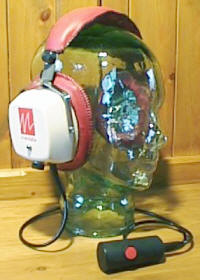



Have you ever seen a rodent in your facilities?
Rodents can transmit diseases to poultryWith cold weather approaching, rodents will be looking for warmth and shelter. Anyone who visits and works daily on a farm knows that rodents like our warm facilities, delicious meals, and temperate water. Everything is free and sometimes readily available. Another gift in our all-inclusive package is that rodents do not face any predators inside the houses. Unfortunately, rodents can hang around and transmit pathogens including Salmonella spp., infectiousbursal disease virus (IBDV), chicken anemia virus (CAV), and inclusion body hepatitis (IBH) from other premises and contaminated birds. For these reasons, the presence of rodents creates a high risk of breaking the biosecurity rules.
To get rid of rodents, learn about them
Rats and mice are active at night and hide during the day. However, when the facilities are overcrowded by rodents, they may appear during the day, even when people are working inside the houses. Be aware that the appearance of a mouse or rat during the day can indicate a significant population (some estimate 500 to 1,000!). Do not allow them to overrun your facilities. In addition, if the population of rodents is dense, the rodents will compete and disturb breeders, biting them and eating the eggs and feed.
Rodents are gnawers, allowing them to wear down their superior incisors, which grow continuously (0.4 millimeter per day). Gnawing on wires can lead to fires due to electrical shorts. Gnawing also can cause equipment damage and accelerated wear of material including egg belts, curtains, and pipes. Rodents also burrow in hidden places under the concrete, causing foundation damage.
A small hole (only 6 and 12 millimeters) is a welcoming entrance for young mice and rats, respectively.
Their quick reproductive cycle enables them to increase their population within a short period of time: 7 to 10 litters of mice per year multiplied by 7 to 10 mice per litter.
Three types of rodents can invade our facilities:
1. The house mouse gnaws all the time, is curious, likes to live in the feed storage area, and stays close (<50 meters) to the house. Its strong-smelling urine facilitates their detection.
2. The black rat or roof rat, which eats once a day, climbs and hides under the roof. It needs to live close to a water source.
3. The Norway rat lives mostly outside. The territorial range for rats is about 100 meters. A rat is suspicious. For instance, arsenic is no longer an effective rodenticide because rats learned that eating the bait led to the death of a housemate. As a result, different rodenticides have been developed, including anticoagulants.
Control the rodent population
Rodents represent a threat to production from a sanitary and economic point of view. Their entrances must be closed. They are controlled by monitoring the consumption of rodent baits to prevent an infestation. The continuous monitoring and tracking of rodent activity is the only way to prevent an invasion.
A good start to control rodents is to use the senses. Look for tracks and fresh gnawing or sniff for musky odors. Species can be distinguished by the shape of their feces: round feces in the case of rats and small, sharp feces in the case of mice.
These three pillars can prevent and fight against rodent infestations:
1. Maintain rodent-proof facilities: For instance, in dark houses, do not allow light leakage. The entrance of light highlights the presence of a hole that could be big enough for mice to gain access. Another common example is the habit of not closing the poultry house door. During egg collection, the main access door can remain open for 1 or 2 hours for daily collection of eggs. Otherwise, the door should remain closed.
2. Eradicate the rodent nests and eliminate food sources: In the feed storage room, it is not unusual to see some bag leakage and spilt feed on the floor. This is a rodent treat, especially if they can find a water source nearby.
3. Get rid of rodents as soon as possible: The presence of rodents must be considered an emergency. Indeed, it is easier to eliminate a few mice than a colossal family. Keep in mind that rodents can reproduce starting at 6 weeks old and gestation lasts only 3 weeks. During their lifespan, the matriarch can produce thousands of progeny.
The key is to prevent hiding and breeding places and sources of food and water for rodents. Ensure premises are kept clean and do not allow any light leakage, especially in a dark house. Create a harsh, inhospitable outside environment by keeping vegetation short and ensuring the disposal of dead birds in a closed and easily cleaned area. Ideally, the farm should be surrounded by a deep concrete wall (50 centimeters in depth) to prevent tunneling under fences. Plain tin sheets and doors as part of the fencing will complete the unwelcoming barriers (Figure 1).
Rodenticides and bait stations
Having barriers and rodent stations in place is not enough to deter rodents. Monitoring their presence with the use of rodent baits is obligatory. A map outlining the location of all numbered bait stations must be updated regularly and will help identify the first arrivals (Figure 2).
If no rodent activity is found, checking once a week will be sufficient. In the case of an infestation, monitor the bait stations daily and place additional bait stations.
The baits must be placed close to the perimeter fence along the outside wall of the houses and inside the house every 15 to 25 meters. Physical traps such as a mechanical mouse or sticky traps can be useful to catch juvenile mice in the case of infestations. Rats, however, will learn quickly that this mechanism represents a high risk for their life and will avoid being trapped. Moreover, rotation of baits at least twice a year will prevent resistance and bait shyness.
Ingestion of anticoagulant baits will cause internal bleeding after a few hours or days. Therefore, rodents will not make any link between the death of their housemate and baits. Doses and disposition of the bait follow dedicated rules according to the species of rodents that are targeted. Place bait stations on the floor for mice and at a higher level, on the beam, for rats (Figure 3). Spreading poison directly on the ground will make it impossible to know if it has been consumed and if the rodents are colonizing.
Use gloves to prevent tainting baits with human scent, which can discourage consumption. Some baits are insoluble,such as brodifacoum, and will be perfect outside. Bromadiolone, which is soluble, can be damaged by rain. Outside, a bait station must be fixed to prevent other animals from playing or eating bait.
Make sure you choose the correct bait presentation. For instance, whole wheat will not be efficient against mice because they peel it. Prevent creating places where the rodents can hide. Do not pile bags, lean feed bags against walls, or store material used for chick placement.
In the case of high infestation, anticoagulant baits can be swapped with bromethalin, cholecalciferol, or alpha-chloralose (according to your country’s regulations). These poisons will act quickly (except for cholecalciferol) and decrease the population quickly. Another solution that’s gaining more traction is chemical sterilization. However, its use on farms is not well documented.
Conclusion
Even in the best modern facility, the risk of welcoming rodents is considerable. The goal should be to create an unpleasant environment for rodents including a tidy room, no feed spillage, no light leakage, and an excellent bait monitoring program.











